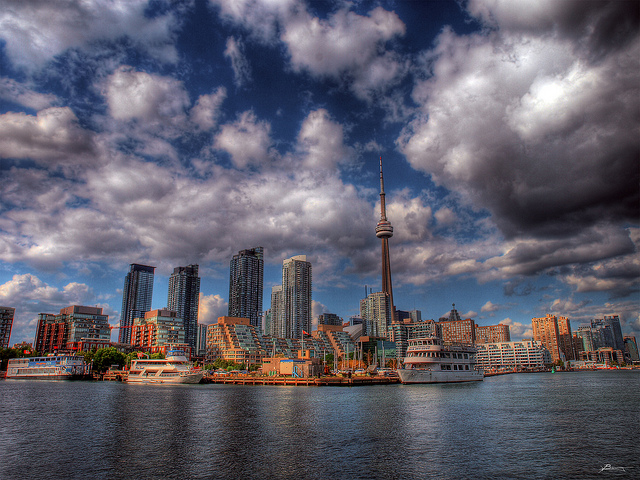Please support our coverage of democratic movements and become a supporter of rabble.ca.
Since the Truth and Reconciliation Commission (TRC) delivered its findings in Ottawa last month, the concept of reconciliation is everywhere in the Canadian media. But what does reconciliation mean for Canadian settlers?
In his concluding speech for the TRC, Justice Murray Sinclair said that “Reconciliation is not an aboriginal problem — it is a Canadian problem. It involves all of us.”
The TRC Executive Summary lists education as a key plank in its Calls for Action. Sinclair’s comment underscores how settlers have a responsibility to educate themselves about all aspects of Indigenous-settler relations, including residential schools, treaties, and Indigenous peoples’ past and ongoing contributions to Canadian history.
What does this education look like? For one, it means learning the history of the land we live on in a specific and local context, including the treaties that made non-Indigenous settlement there possible. In some parts of the country, this history is well known. In others, like Canada’s largest city, this history is often obscured.
I am a settler who grew up in Toronto and only recently learned about this city’s treaty history. This is a common story.
Brian MacLean, a member of First Story Toronto, said he noticed “a conspiracy of silence about what the Toronto story is.” In order to debunk the myth that Toronto has no history, MacLean and historian Victoria Freeman organized Talking Toronto Treaties on June 26 at George Brown College’s Waterfront Campus on the shore of Lake Ontario.
Talking Toronto Treaties sought to address the Toronto’s treaty history, by providing historical context for the city’s settlement. Zachary Smith, a PhD student in history at the University of Toronto, spoke about the pre-settlement conflicts between Anishinaabe and Haudenosaunee peoples that led to the Dish with one Spoon wampum, an important peace treaty.
Later, Anishinaabe peoples established seven villages along the shore of Lake Ontario. Smith noted that while early British colonists negotiated treaties on the basis of shared land use, the purpose of treaties later shifted to acquiring exclusive use of the land at the exclusion of Indigenous people.
In 1787, the British distributed presents to the Mississauga, ostensibly in exchange for their support during the American Revolutionary War. These gifts were later designated as payment for land in what would become known as the Toronto Purchase.
Since learning as reconciliation also means de-privileging the colonial historical record, the event’s presenters embraced a form of learning that went beyond the university lecture model, Brian Charles, of Georgina Island First Nation, presented a timeline of wampum belts that told the story of the last 500 years in this region through such landmark living documents as the Two Row Wampum and the Covenant Chain. Smith describes wampum belts as a material representation of “the morally binding nature of an agreement or promise” that “sanctify one’s word in practice.”
Stacey LaForme, a band councillor for the Mississauga of the New Credit, spoke about his experience negotiating the Mississauga’s land claim for the area designated in the Toronto Purchases of 1787 and 1805. That land claim concluded in 2010 with a financial settlement.
The afternoon concluded with a reflective activity led by Jumblies Theatre. Facilitators led participants through a series of movements they had created to define words related to the treaty process that carry emotional and political weight, such as “acknowledge” and “protect.” Participants then shared their thoughts on slips of paper, which were read aloud.
While the audience was clearly fatigued after five hours of treaty education, the exercise nevertheless underscored the importance of exploring this kind of knowledge through movement, song and reflection. Learning about treaty history goes beyond the one-way transmission of historical fact.
MacLean and Freeman believe that this event is the first of its kind to be put on in Toronto. “We see it as a prototype, in a way,” Freeman said. “So we would like to do other presentations in other areas of the city.”
Talking Toronto Treaties aims to set participants on a path to further learning. The history of treaties in Toronto is complex and cannot be wholly learned in an afternoon. It is rather a first step in understanding one’s obligations as a treaty person.
“To be a treaty person simply means to understand who you are, how you fit in the process, to understand what you have to do to ensure that the treaty process works,” said Laforme.
When asked what settlers in the city should know about treaties, Freeman emphasizes that Toronto is underscored by multiple living agreements.
“This wasn’t just a land sale sometime in the past. We are in an ongoing relationship between indigenous and non-indigenous people,” said Freeman.
Christina Turner is a PhD student in English at the University of Toronto. She was rabble’s Books and Blogs Intern from 2013-2014.
Please support our coverage of democratic movements and become a supporter of rabble.ca.



